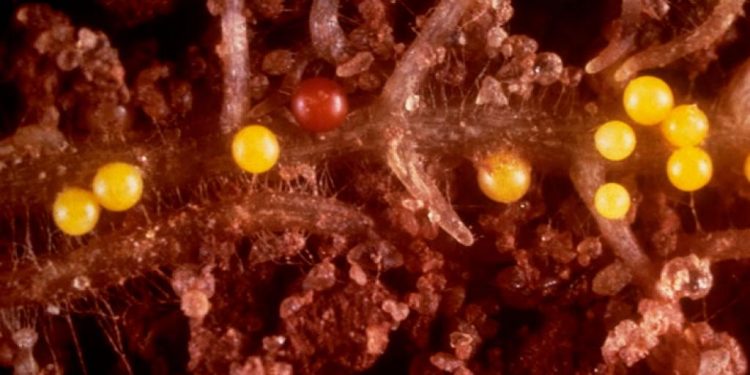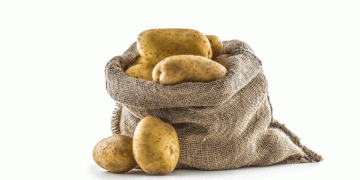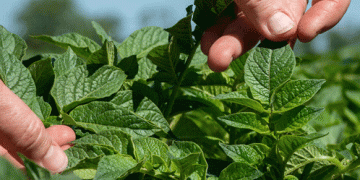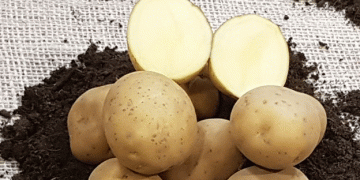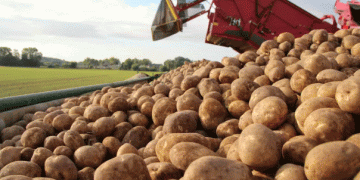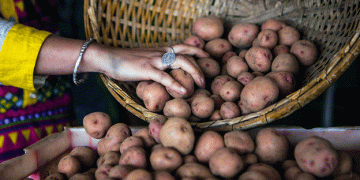Globodera rostochiensis and Globodera pallida (potato cyst nematodes, PCNs) cause major losses in Solanum
tuberosum . The main route of spread of these nematodes is movement of infested soil (e.g. on farm machinery, adhering to tubers). Infestation occurs when the second-stage juvenile hatches from the egg and enters the root near the growing tip by puncturing the epidermal cell walls, and then the internal cell walls, with its stylet. Eventually it begins feeding on cells in the pericycle, cortex or endodermis. The nematode induces enlargement of the root cells and breakdown of their walls to form a large, syncytial transfer cell. This syncytium provides nutrients for the nematode. Infested potato plants have a reduced root system and, because of the decreased water uptake, death of the plant can eventually occur.
Above-ground symptoms due to PCNs are not specific and often go undetected.
General symptoms include patches of poor growth in the crop, with plants sometimes showing yellowing, wilting or death of foliage; tuber size is reduced and roots are extensively branched with soil stuck to them. However, there are many other causes of these symptoms. Plants should therefore be lifted for a visual check for the presence of cysts and young females on the roots, or a soil sample should be
taken for testing. Young females and cysts are just visible to the naked eye as tiny white, yellow or brown pin-heads on the root surface. Detection by lifting plants is only possible for a short time as females mature into cysts and then can easily be lost at lifting, and this method is time-consuming. Soil testing is therefore the best way to determine the presence of PCNs.
The identification of Globodera to species level based on morphology can be difficult because of the observed variability of key characteristics. Therefore, the use of a combination of cyst and second-stage juvenile characteristics is recommended for reliable identification.
An IPM approach is required to deal with PCN, including:
- Sample soil to detect the presence of PCN and, if confirmed, determine the PCN species and population levels because these will influence the choice of management options
- Extend rotations to reduce PCN levels: there are PCN tools that demonstrate the interaction between variety, rotation length and PCN population
- Control volunteer (groundkeeper) potatoes
- Use certified seed potatoes, produced on land tested for freedom from PCN
- Ensure hygienic practices that limit the movement of soil, including that from graders
- Use varieties that are resistant to the species of PCN present
- Use trap cropping and biofumigants in the rotation
- Use a nematicide
Photo: EPPO (2024) EPPO Global Database. https://gd.eppo.int
Reference: EPPO (2022), PM 7/40 (5) Globodera rostochiensis and Globodera pallida. EPPO Bull, 52: 286-313. https://doi.org/10.1111/epp.12836
